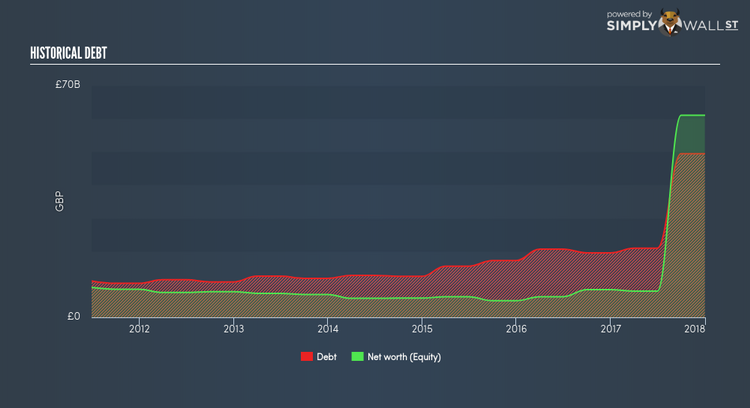How Financially Strong Is British American Tobacco pl.c. (LON:BATS)?

British American Tobacco pl.c. (LSE:BATS), a large-cap worth UK£87.13B, comes to mind for investors seeking a strong and reliable stock investment. Market participants who are conscious of risk tend to search for large firms, attracted by the prospect of varied revenue sources and strong returns on capital. But, the key to extending previous success is in the health of the company’s financials. Today we will look at British American Tobacco’s financial liquidity and debt levels, which are strong indicators for whether the company can weather economic downturns or fund strategic acquisitions for future growth. Note that this commentary is very high-level and solely focused on financial health, so I suggest you dig deeper yourself into BATS here. View our latest analysis for British American Tobacco
How much cash does BATS generate through its operations?
BATS’s debt levels surged from UK£19.50B to UK£49.45B over the last 12 months – this includes both the current and long-term debt. With this rise in debt, BATS’s cash and short-term investments stands at UK£3.36B for investing into the business. Moreover, BATS has generated cash from operations of UK£5.35B over the same time period, leading to an operating cash to total debt ratio of 10.81%, signalling that BATS’s operating cash is not sufficient to cover its debt. This ratio can also be a sign of operational efficiency as an alternative to return on assets. In BATS’s case, it is able to generate 0.11x cash from its debt capital.
Can BATS meet its short-term obligations with the cash in hand?
Looking at BATS’s most recent UK£15.54B liabilities, it seems that the business has not maintained a sufficient level of current assets to meet its obligations, with the current ratio last standing at 0.9x, which is below the prudent industry ratio of 3x.
Can BATS service its debt comfortably?
With a debt-to-equity ratio of 81.03%, BATS can be considered as an above-average leveraged company. This is common amongst large-cap companies because debt can often be a less expensive alternative to equity due to tax deductibility of interest payments. Accordingly, large companies often have lower cost of capital due to easily obtained financing, providing an advantage over smaller companies. We can check to see whether BATS is able to meet its debt obligations by looking at the net interest coverage ratio. Ideally, earnings before interest and tax (EBIT) should cover net interest by at least three times. In BATS’s case, the ratio of 7.04x suggests that interest is appropriately covered. Strong interest coverage is seen as a responsible and safe practice, which highlights why most investors believe large-caps such as BATS is a safe investment.
Next Steps:
With a high level of debt on its balance sheet, BATS could still be in a financially strong position if its cash flow also stacked up. However, this isn’t the case, and there’s room for BATS to increase its operational efficiency. In addition to this, its low liquidity raises concerns over whether current asset management practices are properly implemented for the large-cap. This is only a rough assessment of financial health, and I’m sure BATS has company-specific issues impacting its capital structure decisions. You should continue to research British American Tobacco to get a better picture of the stock by looking at:
Future Outlook: What are well-informed industry analysts predicting for BATS’s future growth? Take a look at our free research report of analyst consensus for BATS’s outlook.
Valuation: What is BATS worth today? Is the stock undervalued, even when its growth outlook is factored into its intrinsic value? The intrinsic value infographic in our free research report helps visualize whether BATS is currently mispriced by the market.
Other High-Performing Stocks: Are there other stocks that provide better prospects with proven track records? Explore our free list of these great stocks here.
To help readers see pass the short term volatility of the financial market, we aim to bring you a long-term focused research analysis purely driven by fundamental data. Note that our analysis does not factor in the latest price sensitive company announcements.
The author is an independent contributor and at the time of publication had no position in the stocks mentioned.

 Yahoo Finance
Yahoo Finance 
